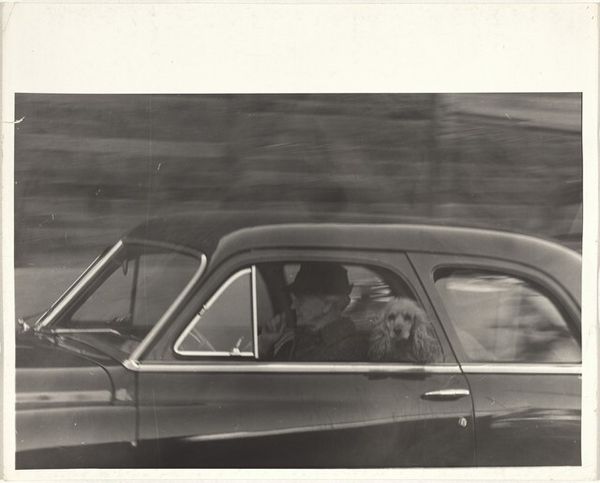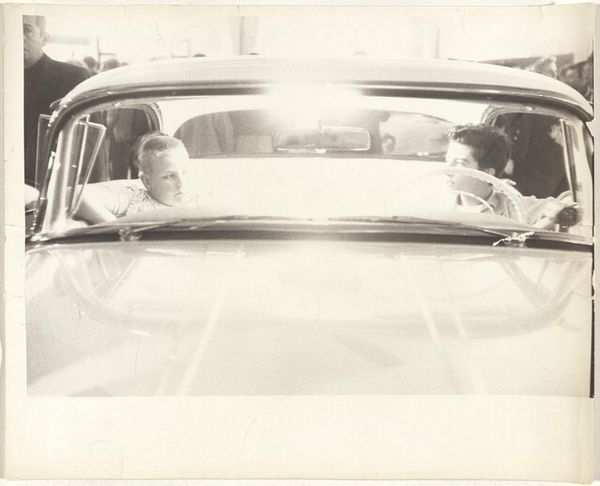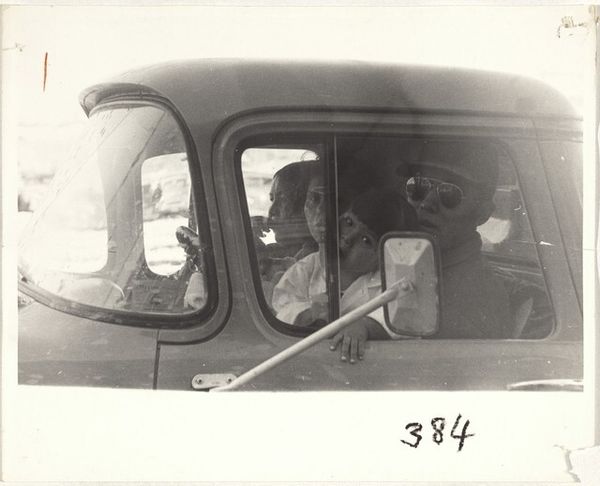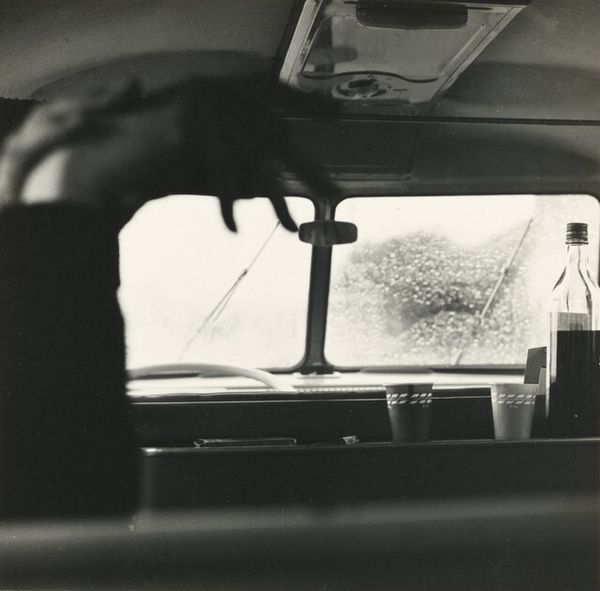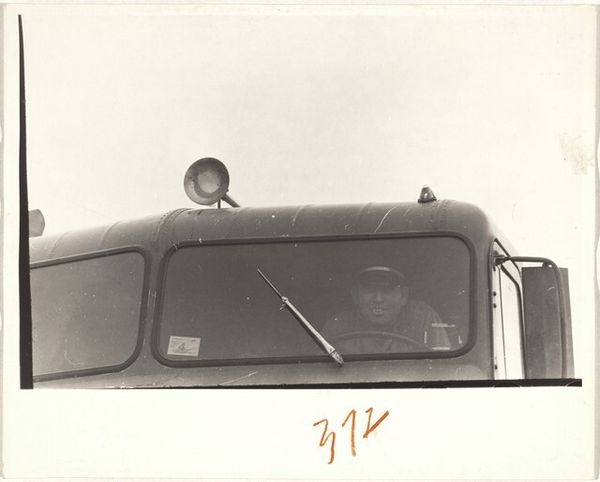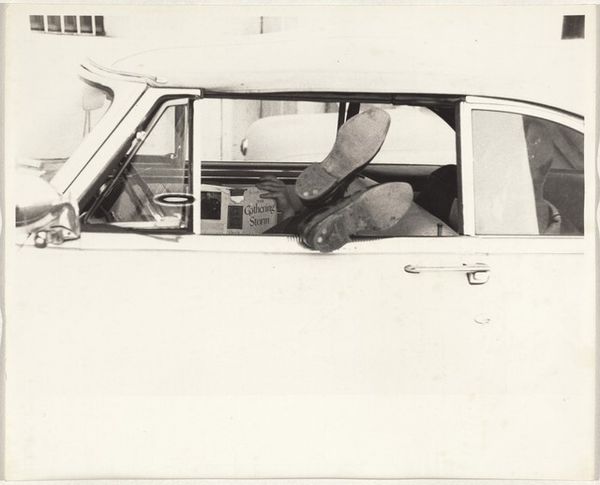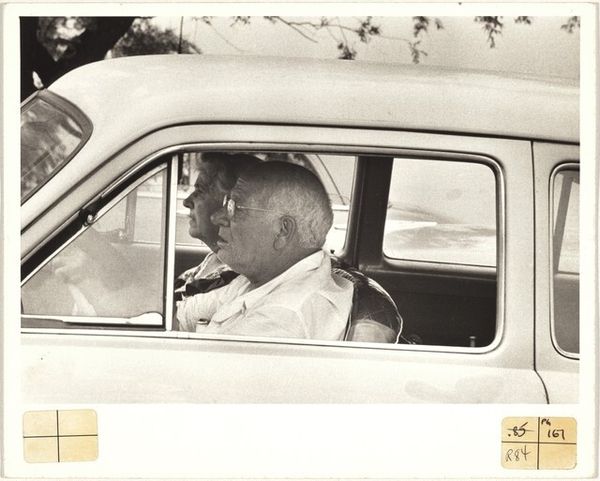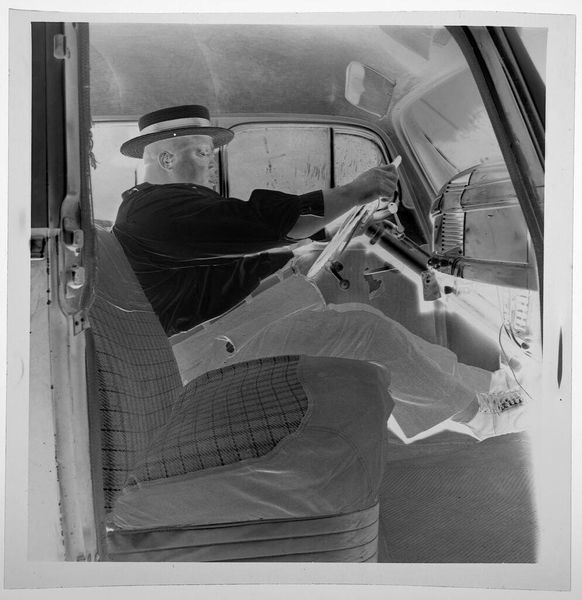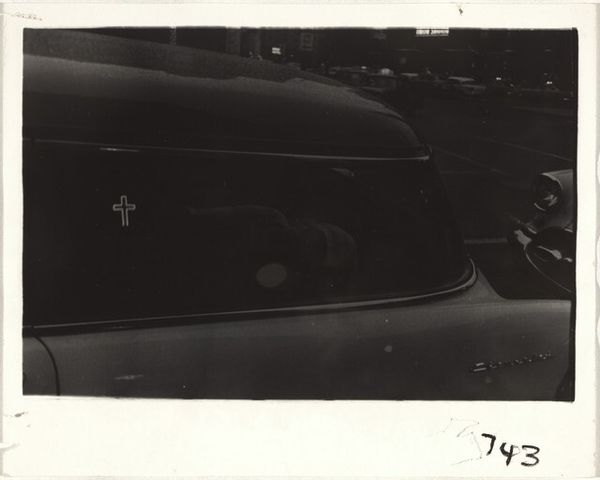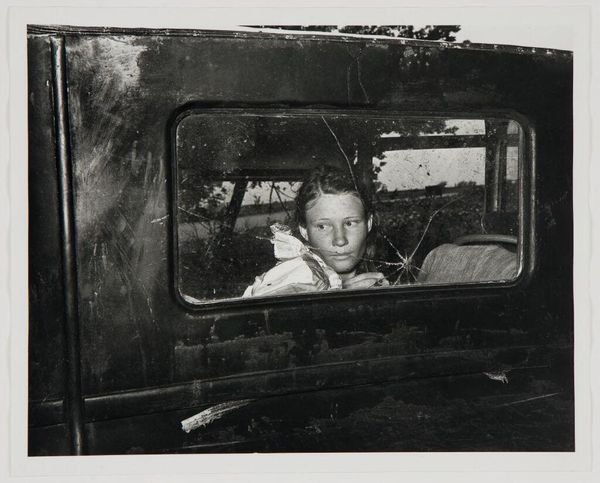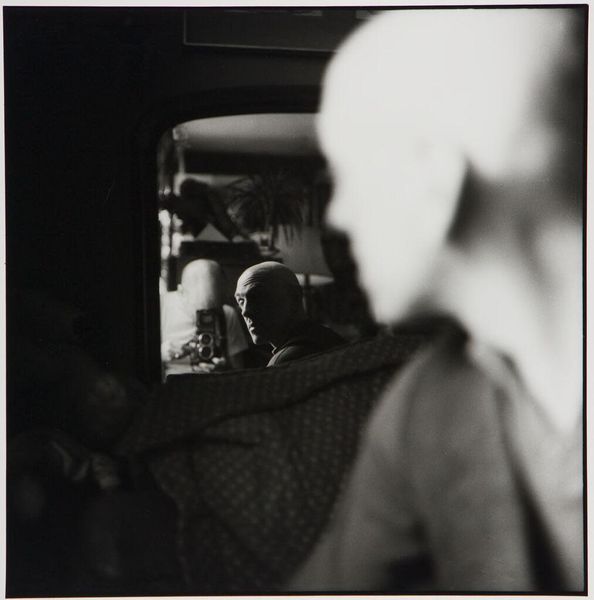
print, photography, gelatin-silver-print
# print
#
landscape
#
street-photography
#
photography
#
gelatin-silver-print
#
realism
Dimensions: image: 15.9 × 35 cm (6 1/4 × 13 3/4 in.) sheet: 20.3 × 25.3 cm (8 × 9 15/16 in.)
Copyright: National Gallery of Art: CC0 1.0
Curator: Robert Frank's 1956 gelatin silver print, "U.S. 91, leaving Blackfoot, Idaho," offers a glimpse into mid-century America. What strikes you first about this photograph? Editor: There's a haunting quality, a sense of isolation despite the presence of two figures in the car. The stark contrast of the black and white amplifies the feeling, like a memory fading at the edges. Curator: Frank’s work, particularly in his series “The Americans,” often captured a raw, unglamorized version of American life, critiquing its idealized image. Here, we see the interior of a car, a quintessential symbol of American freedom, but the mood is far from celebratory. Considering this moment in American history, we see segregation deeply imbedded within all aspects of society. The black passenger almost ghosts within the scene. Editor: The composition draws my eye—the driver is very much present and forward-thinking, hands tightly clenched on the wheel. Yet, the ghostly figure in the background is nearly out of focus, leaving questions of belonging and perhaps hinting to the realities that contradict the myth of progress for all. The interior and inclusion of the window remind me of other photographers’ treatment of mirrors and liminal space as barriers. Curator: Precisely. The automobile itself can be seen as a sort of segregated space, no? Despite physically being present together, the positioning of the passenger and the stark tones speak to a fragmented, dissonant reality within these shared spaces, and, broadly, America. These were photographs about the experience of being a Swiss Jew traveling around the U.S., trying to find meaning from the outside. Editor: I agree, Frank challenges the visual language associated with road trip optimism. The symbols usually linked to travel—vast horizons, winding roads, limitless opportunities—take on a new dimension, laced with undertones of segregation and unspoken anxieties. This photograph then asks the viewer to engage and inquire more about race relations during this particular era. Curator: And the genius of Frank, of course, lies in making the personal, political. This isn't just a snapshot; it's a carefully constructed narrative about power, privilege, and the ever-present complexities of identity. Editor: Indeed, it urges us to reflect not only on America's past but on the continuity of such dynamics in the present. What at first glance seems like an unremarkable photograph reveals the weight of cultural memory, prompting conversation. Curator: I leave this image with a desire for continued critical conversation, particularly when grappling with identity, place, and purpose within community. Editor: Likewise, I hope others will delve beyond surface interpretations to question what the symbols and emotions in this image communicate about their own journeys and perspectives.
Comments
No comments
Be the first to comment and join the conversation on the ultimate creative platform.
